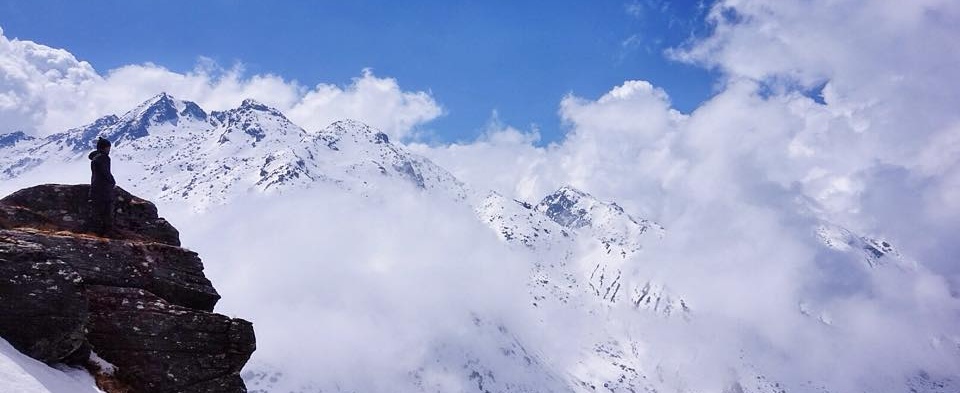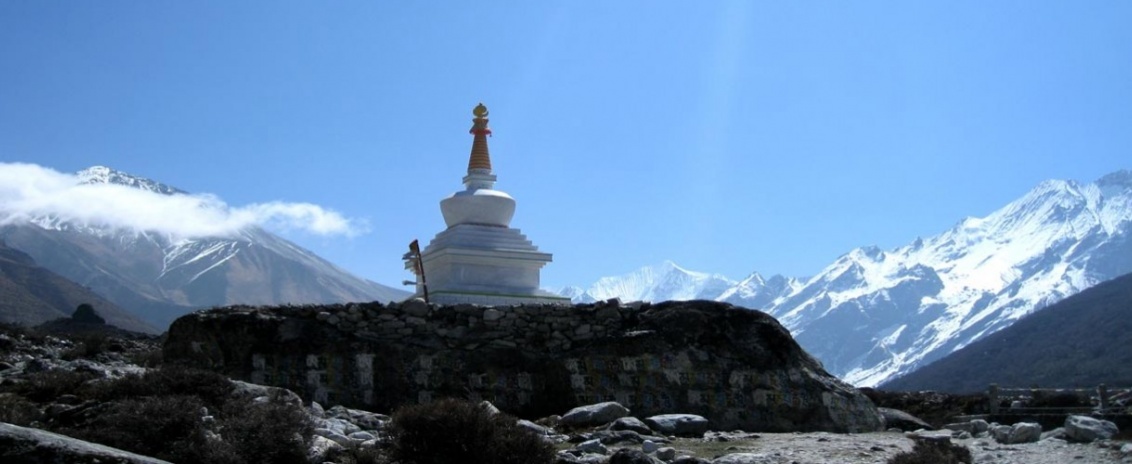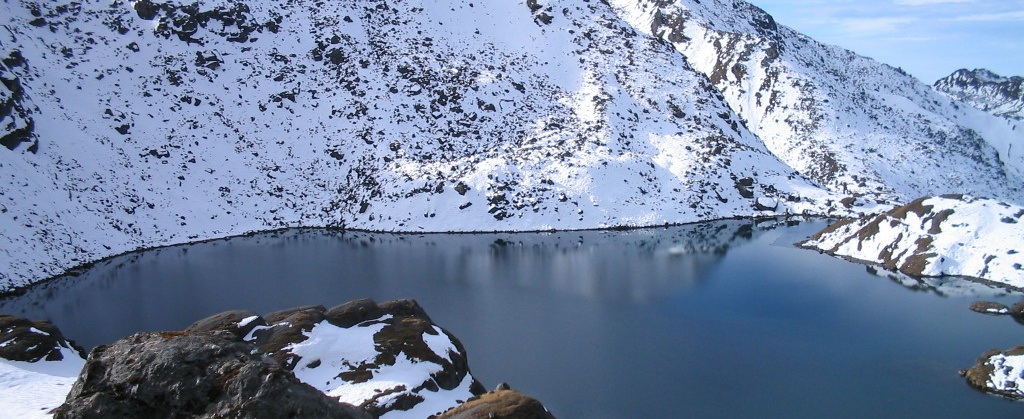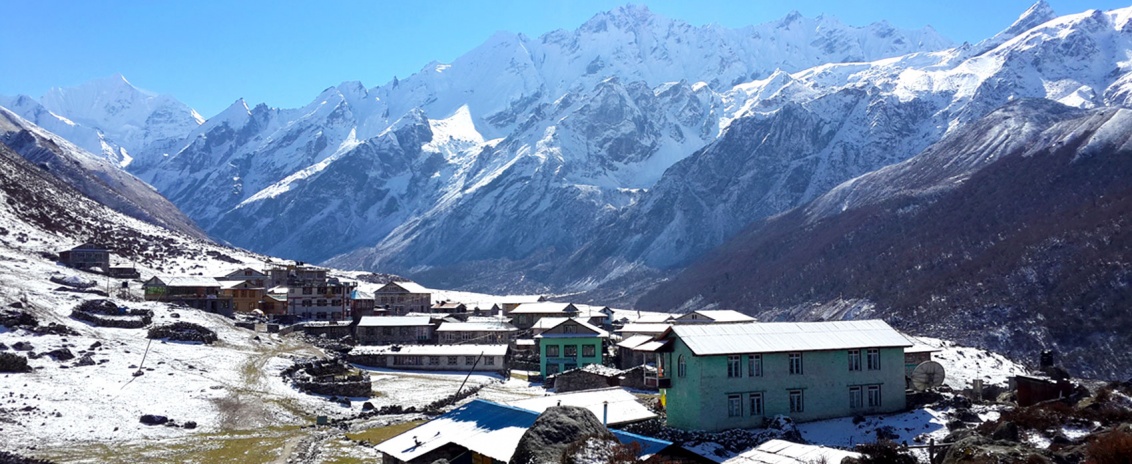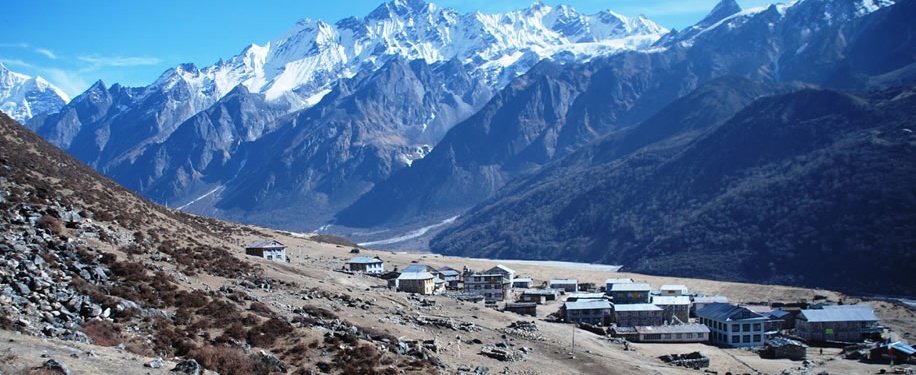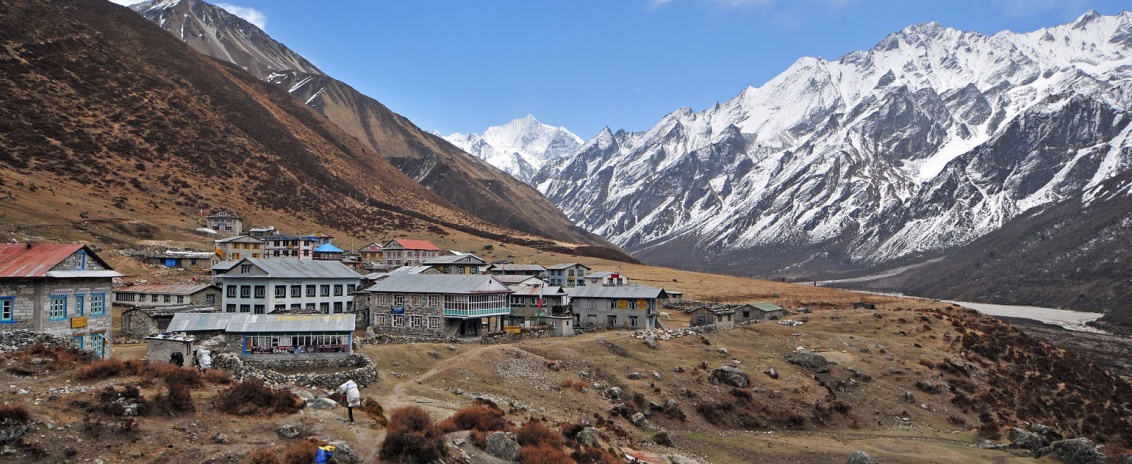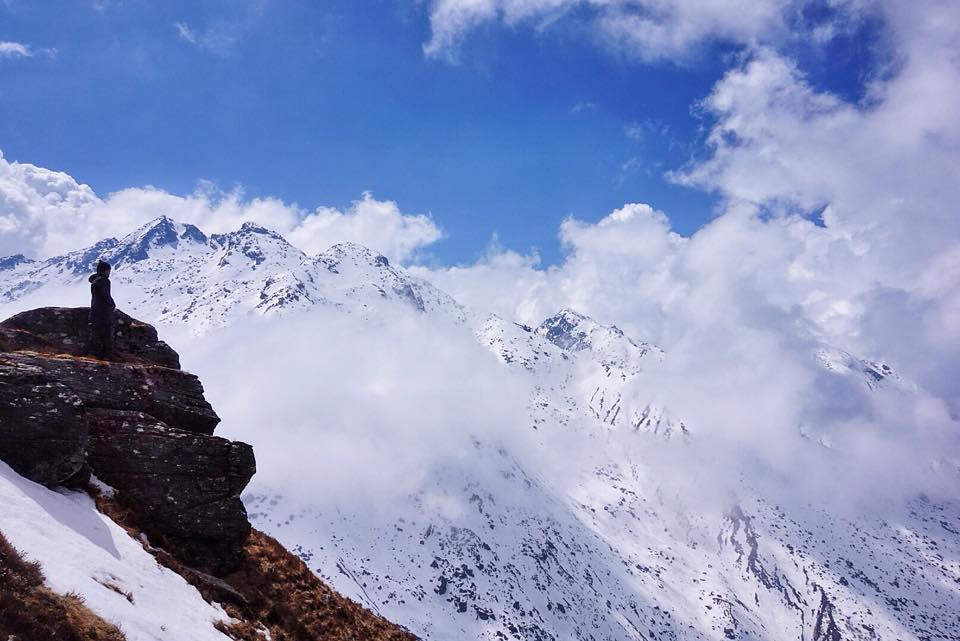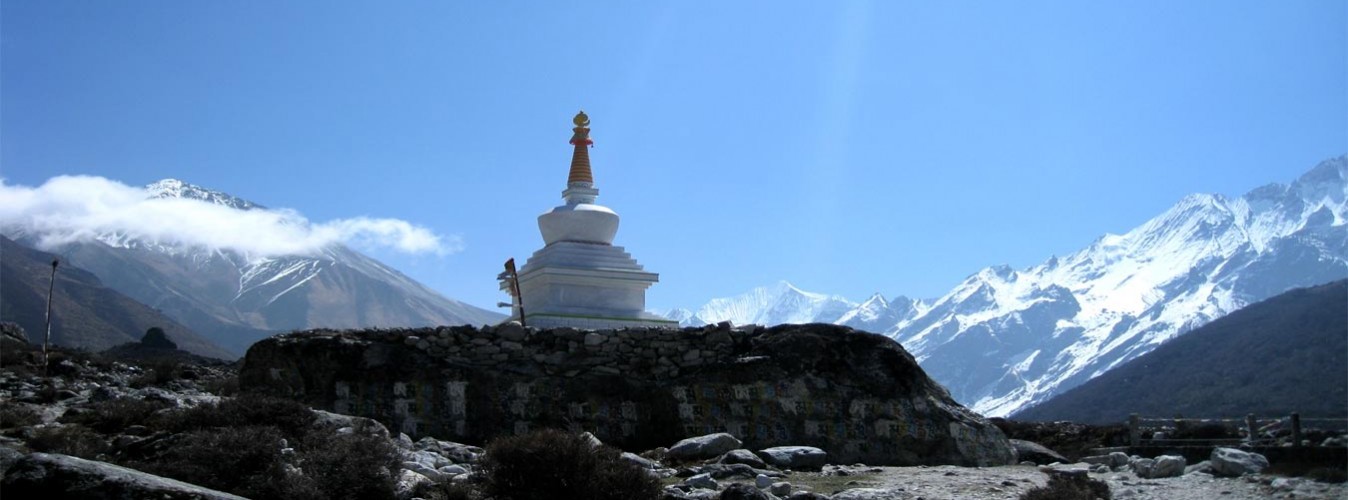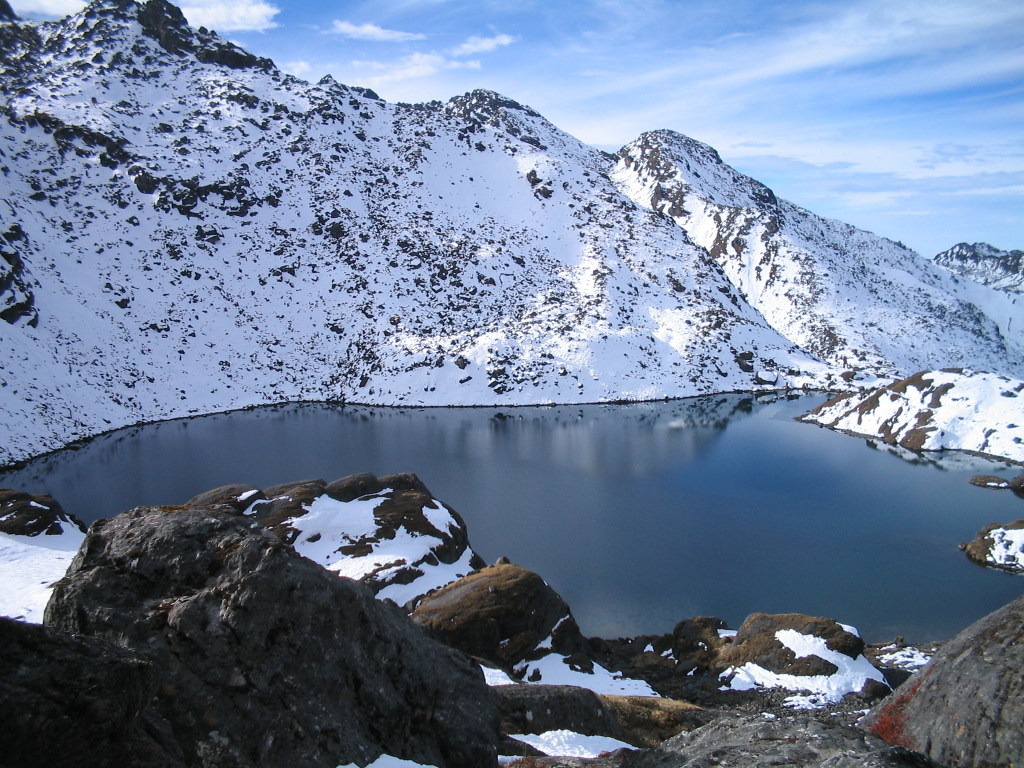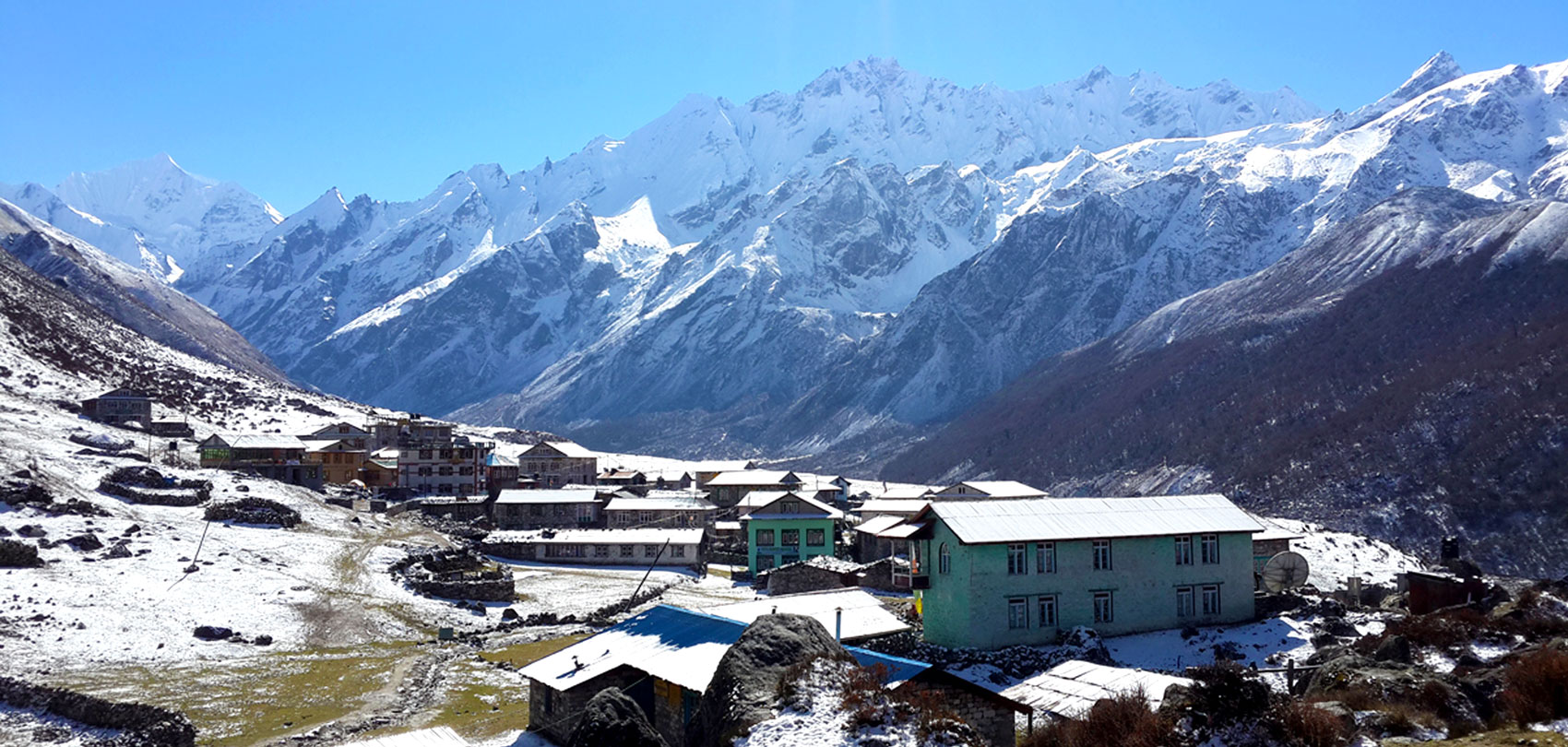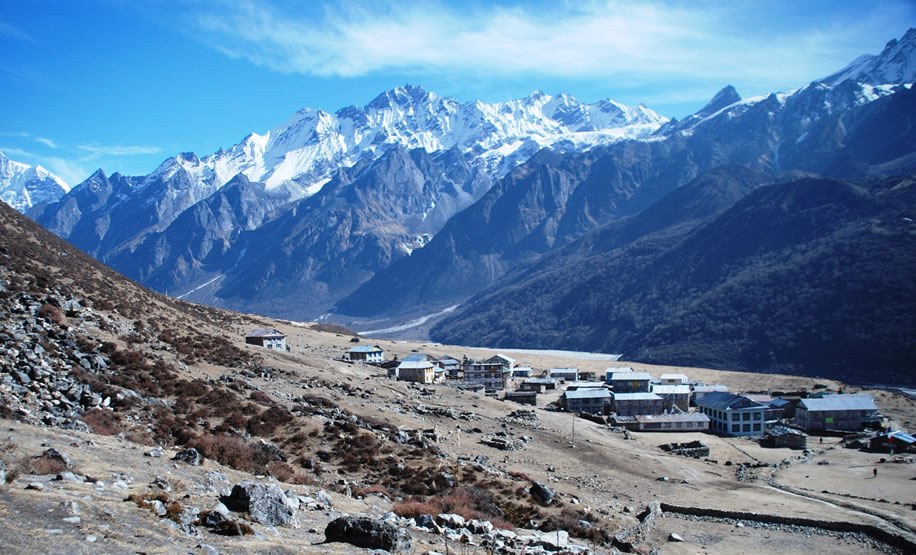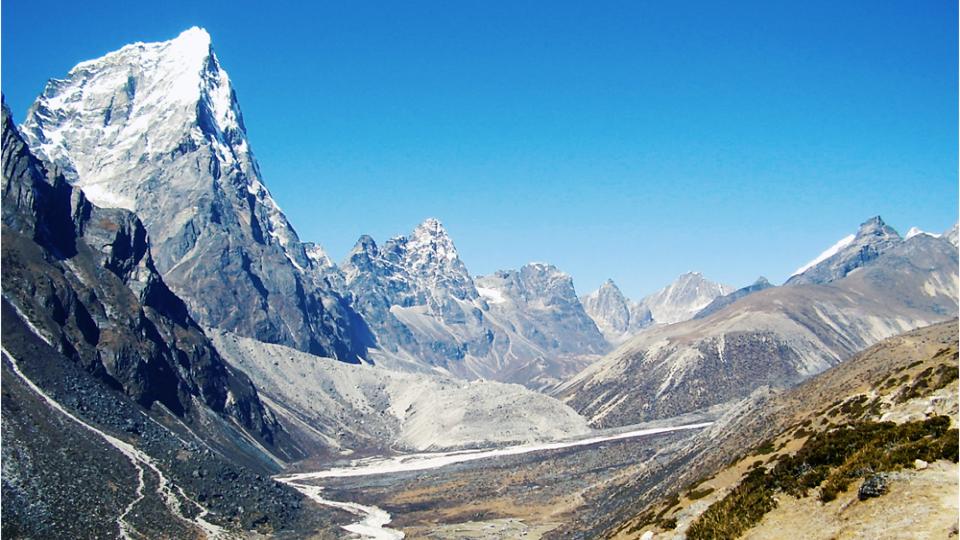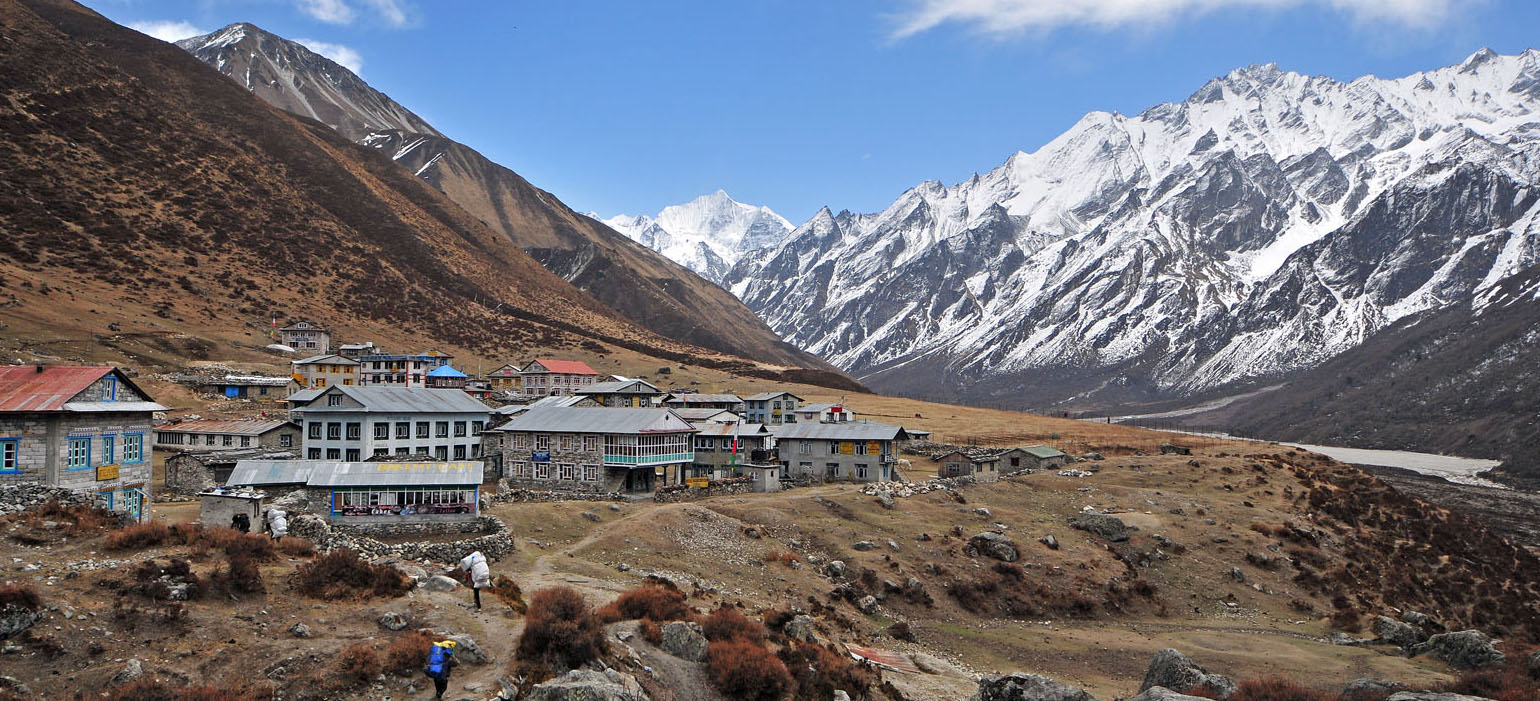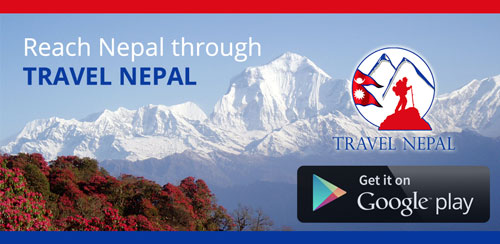Langtang Valley trek is a simple trek in the remote areas of Nepal. This trek allows one to experience Tamang culture with a Tibetan influence in it. Apart from this Langtang Valley trek allows one to get closer to the natural beauty of the western Nepal.
Our Langtang Valley trek begins from Syabrubesi. To get at Syabrubesi we will ride bus for 7 hours. After that our trail passes via Lama Hotel, Langtang Village and then to Gyanjin Gompa. This will be a short and simple trek with lots of adventure and twist within it.
Cost Includes:
7 night accommodation with 3 meals a day during trek
2 night accommodation in Kathmandu on Bb plan
All entrance and Permit charge
Licensed Guide and Porter
All transfer; airport drop pick up
Round trip Bus or Jeep fare Kathmandu - Syabrubesi
Farewell Dinner
DAY 01: Kathmandu
Welcome to Nepal. First day you’re in Nepal. Our
representative will be at the airport to receive you and transfer to Hotel. Our
manager will meet you at hotel or where convenient and brief you about the trek
along with introduction to guide of the trek. Overnight at Hotel on B plan
DAY 02: Kathmandu to Syabrubesi (1,420 m)
First day of our trekking begins with a drive to Syabrubesi
which is the bottom of Langtang Valley. This will be a long drive about 7 hours in
which you will drive half way on a pitched road while other half might be just graveled.
This will be a fun ride as we will pass through waterfall and forest which
houses many endangered species of birds and animals. We will also catch beautiful views of
Annapurna, Manaslu, Ganesh Himal and Langtang range peaks, above 6000 m.
DAY 03: Syabrubesi to
Lama Hotel (2,470 m)
Today our trekking starts. After breakfast, we will head
towards the Lama Hotel where we will stay overnight. We will walk along the Langtang
River. As we walk on our trail passes through uninhabited forests of oak and
rhododendron. We will then cross a small bridge and ascend on a steep trail
which will lead us to the Lama Hotel.
DAY 04: Lama Hotel to
Langtang Village (3,430 m) or Mundu
Today is going to be a little more tiring day. We will
continue to ascend upwards passing through abundant waterfalls overseeing beautiful
mountain landscape. We will then reach to Ghoda Tabela. Here you will see
gazing farms and few of temporary houses of the herders. As we continue our
trek we will see many stupas and chortens. When we get at Langtang village, you
will see a monastery. This monastery has been reported with a little damage due
to Earthquake of 2015 but if restoration is done by the time you arrive, you can
take a walk within the monastery complex. We will continue trek to Mundu where
we will stay for overnight.
DAY 05: Langtang
Village or Mundu to Kyanjin Gompa (3,870 m)
5th day of trekking we will walk towards Kyanjin
Gompa. We will pass through yak fields, water mills and village. This route is considered
to be one of the outstanding routes as it allows you to pass along the prayer
wheels, chortens and longest stone built Mani wall with prayers written all over it. Kyanjin Gompa is another monastery
in the region. This is important shrine for the Buddhist and many rituals take
place here during festivals and special occasions.
Day 06: Kyanjin Gompa
After few days of trek we will rest and acclimatize at
Kyanjin Gompa. We will use this rest day by taking an excursion hike to Tserko
Ri. Tserki Ri has a view point which offers magnificent views of the Himalayas and glaciers. As it gets late afternoon we will return to Kyanjin Gompa. If you
are cheese lover, then this is it. You will have half day to explore small
cheese factory which is supported by the Swiss government.
DAY 07: Kyanjin Gompa
to Lama Hotel
Today we will descend the valley towards Lama Hotel. We will
continue our journey passing through the beautiful Tamang village, forest and rivers.
We will stay for overnight at Lama Hotel.
DAY 08: Lama Hotel to
Syabrubei
Last day of walking, and we will go downhill towards Syabrubesi.
This will be last night of you in the mountains so enjoy a much as you can.
DAY 09: Syabrubesi to
Kathmandu
After completion of our about week long- trek we will return
to Kathmandu. This is the end, but we are sure you have many good memories
taking back along with you which will certainly be a moment to cherish even in
the future. After arrival at Kathmandu, we
will provide you a farewell dinner.
DAY 10: Kathmandu
Last day in Nepal. Please be ready at the lobby of the hotel
at least 3 hours before your flight back to home. Our representative will drop
you to airport. If you love the mountains we guarantee that your heart will
always desire to visit Nepal again so please keep in touch. End of our service.
Cost Excludes:
Visa Fee (free for Indian, Chinese and SAARC nationalities except for Afghans)
Lunch and Dinner in Kathmandu
Travel Insurance
Rental charge for sleeping bag and down jacket
Expenses during trek like charging electronic devices, WI-FI, hot shower, toilet paper rolls, mineral water, and other personal items
Tips to guide and porter
Travel Insurance:
About the travel insurance we suggest our guest to take those insurance which covers all emergency case or other travel related injury during your travel in Nepal. However, this is optional and it depends on your opinion. If you are buying any insurance you can buy which covers for a week or only for days you will be in Nepal.
There are many insurance companies, but we suggest you to get World Nomad. They have emergency evacuation even up to 6000m. But before you get it make sure you are covered for such evacuation. For those who already have insurance of other company, make sure if it covers travel insurance in Nepal and especially evacuation up to 6000m. Link for World Nomads is www.worldnomads.com
Cancellation and Refund:
Although it’s rare but sometimes we might cancel trip due to some internal problems, in such a case you will be refunded full amount of package. If guest wish to cancel trip then money will be refunded as following:
Cancelled one month before arrival full refund
Cancelled 15 days before arrival 75% refund of total cost
Cancelled one week before arrival 50% of total cost
Cancelled less than a week 25% refund of total cost
No Show No refund
Equipment and
Accessories
Trekking on the high altitude area there is some requirement
of equipment.
Sunglasses
Sunhat, cap or Scarf
Woolen hat
Head light and torches
Gloves
Thermals
Fleece
Comfortable trekking boots
Fleece pants
Jackets, down jacket
Sleeping bag rated to -20°C
Trekking poles
Trekking bag or Duffel bag
Water bottle
Sunscreen
Toiletries
Spare battery (if you
have any to charge your electronic devices on the way)
- Can I travel alone without guide, just with a porter?
Well it’s your choice whether you want a guide or not. But what we suggest you, is to take a guide because there are thousands of solo traveler missing in Nepal. If there is a guide to assist you, you don't have to worry about where to stay for a night; how to find your way, how do you arrange your everyday trip and how do you take care of yourself if there are any bad happenings. Moreover, mountains are not like city area where you will find many to communicate, In the mountain very few speak English, and we remind you not to believe anyone you meet on the way cause there are good and bad people everywhere.
- What age people can trek in the Mountains?
There is no limit in age unless you are below 18 yrs. old. Everyone can trek if their physical strength allows them. If there is kid interested, then he/she must be accompanied by his/her parent. For those above 18 don’t have any restriction. Before you choose any trekking destination consult with your physician and then go for that which you can complete.
- How long is the trekking? How long will be the walking trail?
Trekking depends on the kind of package you choose. There are packages of a week and even of 3 weeks and more. When you are trekking average hour you will trek is four to six hours, in some cases 7 hours a day, which will be minimum of 7km and maximum 15 km of walking in a day.
- Is it compulsory to have previous trekking history?
No, if this is your first time then it's OK. Not all the trekkers have previous experience. There are many beginners who do well than those experienced ones. Before you come to Nepal indulge yourself in some walking or stamina building sports, so that it becomes easier for you to even walk for 6 hours a day.
- What things do I need to prepare before coming to Nepal?
Documents:
You will require documents like passport, color copies of passport, passport size photo graphs, if you are below 18 and travelling with friends, you will require a written document by your parents (travel agreement), if you are going under medication, written prescription by doctor is required. Besides these, if there are any other compulsory documents we will inform you during booking. For any other information you can check our travel essentials where information about Customs, Visa and Travel tips is given.
Equipment:
You will require that equipment which is listed in Equipment list. Please check there. You are free to carry other item if you need even if not mentioned in the list.
Travel Insurance:
Apart from this, most important thing you will require is Travel insurance. As, we've said it's optional but it’s better if you have one. There are many insurance companies, but we suggest you to get World Nomad. They have emergency evacuation even up to 6000m. But before you get it make sure you are covered for such evacuation. For those who already have insurance of other company, make sure if it covers travel insurance in Nepal and especially evacuation up to 6000m. Link for World Nomads is www.worldnomads.com
- What permits are required and who will arrange it for us?
For every trekking, either short or long you will require permits. For all trekking region you will require TIMS (Trekker's Information Management System). We will get it for you and you should prepare a photograph for it. Another is National Park permit. For every trekking region which falls under national park or conservation area, you will require permit. Another is for trekking in restricted area like Upper Mustang and Upper Dolpo where you will need a special permit which will be given for a week or limited days. If permit gets expired you will have to pay extra per day.
- When should I travel to Nepal?
Nepal has two tourist seasons one is spring and other is autumn. Spring season is February to May. Autumn is late August till mid-November. Summer in Nepal receives heavy rainfall which makes trails slippery and dangerous. There are many avalanches in Mountain during this time, so we suggest not to travel during summer. Another is winter; winter in mountains is too cold. Temperature drop to -20°C. There is snowfall and due to bad weather flights even get cancelled for 1 week. So, it’s better not to travel in winter as well.
- What do I need to pack?
This basically depends on which season of year you are traveling. If it is autumn then you should keep in mind that winter is approaching, so it will be cool. If it is spring then you should be aware it gets warmer day by day. Generally in all kind of trekking you will require, a down jacket, a warm fleece jacket, thermal underwear, trekking pants and shorts, trekking boots, a thermal sleeping bag, backpack, and camera. Carry light and few items as much as possible. Just make sure you have all the necessary equipment and clothes. Too much overpacking will trouble you in the end. If you are under medication, carry your medicine. If you want to bring something with yourself for the trek but you don't have it right now, we suggest you not to buy such things. Almost all the necessary gears can be easily bought or be rented at shops in Kathmandu.
- Is there any arrangement for single travelers?
Whether you are single or traveling with group, a long as you are traveling with Nep Travels, you will be given a guide. If you are single and want a porter, you have to pay extra $11 per day for a porter. If there is more than one person then, one porter will be provided automatically. Generally, we have porter in 2:1 ratio; two trekkers will have one porter.
- How much weight will porter carry?
In an average porter will carry 5kg to 15kg. We recommend you to carry bag of 10-15kg (max.) weight. Try to carry few items as possible. You have to carry your important stuffs by yourself like camera, passport, small day bag and other food (chocolates, energy drinks). Rest other will be carried by porter. So you will have two bags during trekking, one carried by porter another carried by yourself.
- What communication options exist while trekking?
Don't forget you are trekking in the remote areas. However, access to mobile and internet is expanding so you can communicate using local mobile card and internet. Many routes offer local VHF phones, while more remote trails, a satellite phone is the only option. Connections are interrupted frequently but it's still OK considering place you are traveling.
- What is Altitude sickness? What is acclimatization?
When you are trekking in mountain, as you go upwards oxygen in air decreases. Sometimes you might feel headache, vomiting and nausea followed by dizziness. So when you see these symptoms, you might be suffering from Altitude sickness. So, if you have any such symptoms immediately tell your guide. To avoid altitude sickness you will have to take rest and let your body adjust to the surrounding which is called Acclimatization. If you feel too difficult even after acclimatization the best option is to descend rather than to wait for any rescue.
- What to do in emergency cases and injuries?
If there is small injury or accident, then our guide will provide you with first aid. All our guides have received first aid training so this will not be a serious matter. However, your safety comes first. If there is any big accident, then we will take you to nearby hospital. If there is case of emergency than we will immediately contact your insurance and you will be rescued by a helicopter.
- How will the case of incomplete trip be handled?
There is rare chance of incomplete trip. However, if there is such incident then we are sorry and please understand we cannot refund you money that you've paid. All the arrangements are done before your arrival, so we have to pay in advance for hotels, lodges, guide and porter. Permit and TIMS once used cannot be refund, so we will not be able to refund your money. If due to climate reasons or our technical problem you cannot start trek, then you can change trekking package and switch to another one.
- What sort of accommodation and food will be in mountain?
Everything in the mountain will be basic. You will stay in tea houses which is lodges and small hotels in the trekking routes. Accommodation will be in twin sharing basis. You will be given three meals and a drink (coffee, hot chocolate, tea) a day. As you go up wards, you will be served simple food. We suggest you to order vegetarian food cause meat in mountains are not fresh and you may easily suffer from Diarrhea. Mineral water in mountain is expensive than city and it gets more expensive as you go upward. You can buy water purifying pills and drink water which is served in local hotel and lodges by purifying yourself.
- What about tips to guide and porter?
Well, tips are optional. If you are happy with service then you can tip as much as you want. Many guests avoid tipping to guide and porter. However, guide and porter work hard to make your trip successful, so they expect something from you. So, generally we suggest $80 as tip to porter and guide. Then they will divide within each other. If you are in group then, collect $80 per person then divide equally to guide and porter. We fairly said you the idea of tipping, if you have any other questions related to tipping, please mention them during booking.
All Inclusive Price.
$ 800 USD
Estimated Time
10 days
*CONTACT US FOR DEPARTURE DATE
Customize this trip.
- Number of members ? No problem.
- We can customize as per your need.
- We will help you to make this trip fit in your budget.
- Contact us for more information and enquiry.
Trip Facts
- Duration:10 Days
- Highest access:3,870 m
- Group Size:2-10
- Best Season:Spring, Autumn
- Accommodation:Tea Houses
- Difficulty level:



 (Hard)
(Hard)





